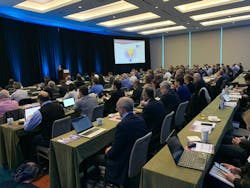AKIRA HIRUMA, Hamamatsu Photonics
Hamamatsu is a well-known brand and Akira Hiruma, President and CEO of Hamamatsu Photonics, answered one of the frequent questions on the company name right at the beginning: It is not the city named after the company, it is the other way around. Nevertheless, Hamamatsu Photonics K.K. has shown a remarkable growth story since its inception in 1953 and today it proudly wears the name of this Japanese high-tech region on global markets.
Hamamatsu started as a manufacturer of photo-electron tubes. Today, the company still sells photomultiplier tubes—they are used at such famous research projects as the Super-Kamiokande underground neutrino detector. But the major part of the company’s 145.9 billion Yen ($1.3 billion) revenue in 2019 was earned with sales of medical instruments (39.6%) and industrial instruments (26.4%). Some 28% of the total revenue was created with nuclear medical instruments such as x-ray devices, CT and PET scanners, as well as dental scanners.
Hiruma identified innovation as a major challenge for further growth (see figure). Although Hamamatsu has a strong salesforce with excellent contacts with their customers to find out about their needs, he believes that further growth requires small structures to come up with new applications. It needs small structures such as startups that are utilizing photonics and point to new markets.
Consequently, Hamamatsu Photonics started a corporate venture capital function within the company. It may provide seed funding or complement other investments. In particular, Hamamatsu can offer technical support to the innovators. However, it is hard to find such startups in Japan, as Hiruma pointed out.
The city of Hamamatsu is home to several famous car manufacturers: Toyota Motors started there, and so did Honda, Suzuki, and Yamaha. Today most of the manufacturing has moved out of town, and Hamamatsu Photonics is very engaged in establishing the area as the preeminent photonics city.
One measure to achieve this was the foundation of the Graduate School for the Creation of New Photonics Industries (GPI), which was started by Hamamatsu Photonics and other companies in 2005. It offers a doctoral program with the clear intention of cultivating human resources “capable of launching new industries that will focus on light and its infinite possibilities.” Already, 31 startups are located there.
Hamamatsu Photonics will continue to work on future applications of photonics technologies. Mainly, they are focused on medical applications because about 40% of their revenue is generated by that field. Their future core technologies range from photon-counting image sensors to new supercontinuum light sources and sophisticated x-ray simulation techniques.

